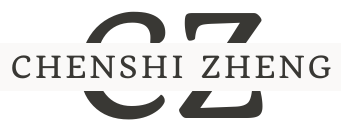In a world where avocado toast and fancy lattes can wreak havoc on a budget, managing finances has never been more crucial—or more entertaining. Enter tech tools for home budgeting, the superheroes of personal finance that swoop in to save the day. With the right apps and gadgets, anyone can turn their financial chaos into a well-organized masterpiece.
Gone are the days of scribbling numbers on napkins or pretending that “next month” is the perfect time to start budgeting. These innovative tools not only simplify tracking expenses but also add a sprinkle of fun to the process. So why not trade in the stress for some smart tech? Let’s dive into the must-have tools that’ll help keep those pesky dollars in check while keeping a smile on your face.
Table of Contents
ToggleOverview of Tech Tools for Home Budgeting
Tech tools for home budgeting make finance management straightforward and efficient. Various apps provide users with features like expense tracking, budgeting templates, and financial goal setting. Many individuals find budgeting apps help categorize spending into clear segments, making it easier to identify areas for improvement.
Tools such as Mint and YNAB (You Need A Budget) offer real-time insights into spending habits. Mint connects directly to bank accounts for automatic transaction tracking, while YNAB encourages proactive planning by allocating funds to specific expenses ahead of time. Users benefit from learning how to set achievable financial goals and monitor progress.
Dedicated budgeting spreadsheets also play a significant role in managing finances. Google Sheets and Microsoft Excel offer customizable templates that allow for precise tracking. She can adjust formulas to reflect unique financial situations, tailoring reports according to her needs.
Moreover, mobile budgeting gadgets enhance the experience by providing instant feedback. Devices such as smart budgeting assistants and cash tracking tools help maintain awareness of cash flow. They provide updates on spending limits and alert users when budgets approach their limits.
Lastly, educational resources coupled with these tech tools deepen financial literacy. Many platforms offer articles and videos on healthy financial habits. Users can gain knowledge that complements the tools they employ, leading to smarter money management.
Overall, the variety of tech tools available empowers users to take control of their finances. Emphasizing user-friendly interfaces, beneficial resources, and personalized features, these tools revolutionize personal finance.
Benefits of Using Tech Tools

Utilizing tech tools for home budgeting offers significant advantages that enhance financial management. These tools streamline processes and provide valuable insights.
Enhanced Tracking and Monitoring
Tracking expenses becomes effortless with budgeting apps. Many applications, such as Mint and YNAB, offer real-time data on spending, allowing users to instantly see where their money goes. Users appreciate the convenience of automated transaction logging, which reduces manual entry errors. Budgeting tools often categorize expenses automatically, making it easier for individuals to identify spending patterns. Monitoring financial health transforms into a more straightforward task, promoting accountability and informed decision-making.
Simplified Budgeting Process
Budgeting takes on a new level of simplicity with tech tools. Customizable templates in apps and spreadsheets allow individuals to create tailored budgets that fit their lifestyles. Budgets become more accessible with user-friendly features that guide users through the planning process. Financial goal setting integrates seamlessly, encouraging users to align spending habits with their goals. Instant feedback on budget performance enables individuals to adjust strategies quickly, leading to greater financial stability.
Top Tech Tools Available
Tech tools for home budgeting offer users various features to streamline financial management. With the right tools, achieving budgeting goals becomes simpler and more effective.
Mobile Apps for Budgeting
Mobile applications such as Mint and YNAB deliver real-time insights into spending habits. Mint connects to bank accounts for automatic transaction tracking, allowing for hassle-free expense management. YNAB focuses on proactive financial planning by promoting the allocation of funds to specific goals. Users can categorize expenses, set budgets, and receive alerts when nearing limits. Convenience plays a key role as mobile apps enable access anytime, anywhere, enhancing the budgeting experience.
Web-Based Budgeting Solutions
Web-based solutions such as Google Sheets and Microsoft Excel provide customizable budgeting templates. Google Sheets offers flexibility with collaborative capabilities, allowing users to share financial goals with family or partners. Microsoft Excel caters to detailed tracking through advanced formulas and functions. These platforms help create tailored budgets that reflect individual financial situations. Users benefit from the ability to analyze data visually, making it easier to identify spending patterns and adjust strategies accordingly.
Features to Look For in Budgeting Tools
Choosing the right budgeting tool hinges on several key features. Prioritizing user experience enhances financial management.
User-Friendly Interface
A user-friendly interface simplifies navigation and encourages regular use. Design elements should focus on clarity, with intuitive layouts guiding users easily through features. Visual representations, such as graphs or charts, provide insights into spending habits at a glance. Navigation menus must be straightforward, ensuring that users can quickly access essential functions like expense entry or budget adjustments. Accessibility across devices enhances usability; whether on a phone or laptop, seamless transitions maintain engagement and effectiveness.
Integration with Banking Services
Integration with banking services streamlines the budgeting process. Automated transaction imports eliminate manual data entry, saving time and reducing errors. Direct links to bank accounts allow users to track spending in real-time, providing immediate insights into financial health. Users benefit from features alerting them about irregular or unexpected charges, fostering awareness and helping to prevent overspending. Security measures, including data encryption and two-factor authentication, further enhance trust, making users feel safe while managing their finances.
Tips for Effective Home Budgeting
Budgeting starts with tracking income and expenses meticulously. Individuals can utilize budgeting apps like Mint or YNAB to simplify this process. Both tools offer the ability to categorize spending effortlessly, which enhances visibility into financial habits. Setting clear financial goals contributes significantly to effective budgeting. Users benefit from knowing what they aim to achieve, such as saving for a vacation or paying off debt.
Creating a budget template helps organize financial data systematically. Google Sheets and Microsoft Excel offer customizable templates that adapt to varying financial situations. Utilizing these templates allows for quick updates and modifications as income and expenses change. Tracking transactions regularly prevents overspending, maintaining budget adherence.
Visual aids enhance understanding of financial health. Graphs and charts in budgeting tools provide insights into spending patterns. Immediate feedback from these visuals allows users to make informed adjustments promptly. Integrating banking services within budgeting apps fosters automation, helping individuals to view real-time financial status without manual input.
Incorporating educational resources plays a crucial role in financial literacy. Many budgeting tools offer tutorials or articles that guide users through effective money management practices. Emphasizing security features attracts users who prioritize the safety of their financial data. Implementing measures like data encryption and two-factor authentication builds trust, encouraging regular tool use.
Engaging with budgeting tools fosters a proactive approach to managing personal finances. Exploring various options and finding the right fit leads to greater financial awareness. Users who embrace effective budgeting tools experience a transformative impact on their financial journey.
Embracing tech tools for home budgeting can significantly enhance financial management. By leveraging apps and gadgets designed for tracking expenses and setting goals, individuals can gain valuable insights into their spending habits. These tools not only simplify budgeting but also promote a proactive approach to personal finance.
With features like real-time tracking and customizable templates, users are empowered to take control of their financial health. The combination of automation and educational resources further enriches the budgeting experience, making it easier to achieve financial stability. Ultimately, engaging with these innovative solutions can transform the way individuals manage their finances, leading to greater awareness and improved financial outcomes.




